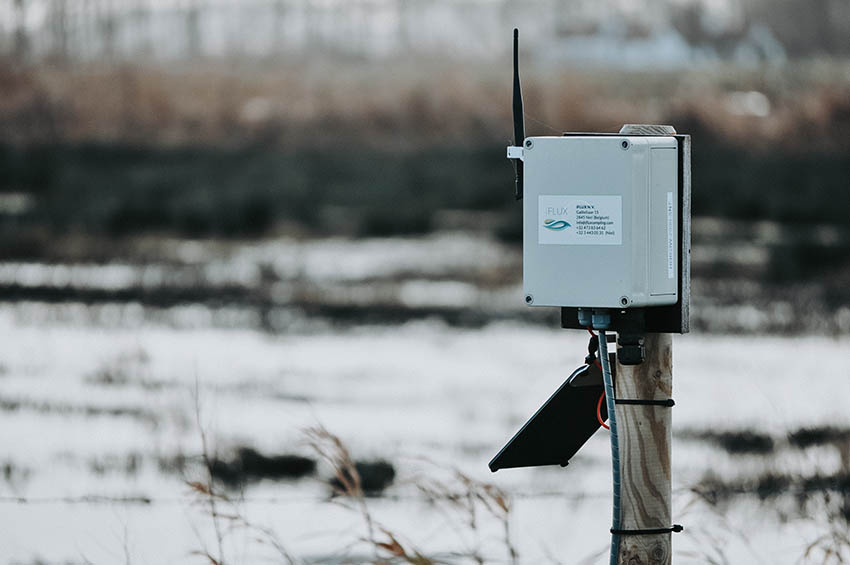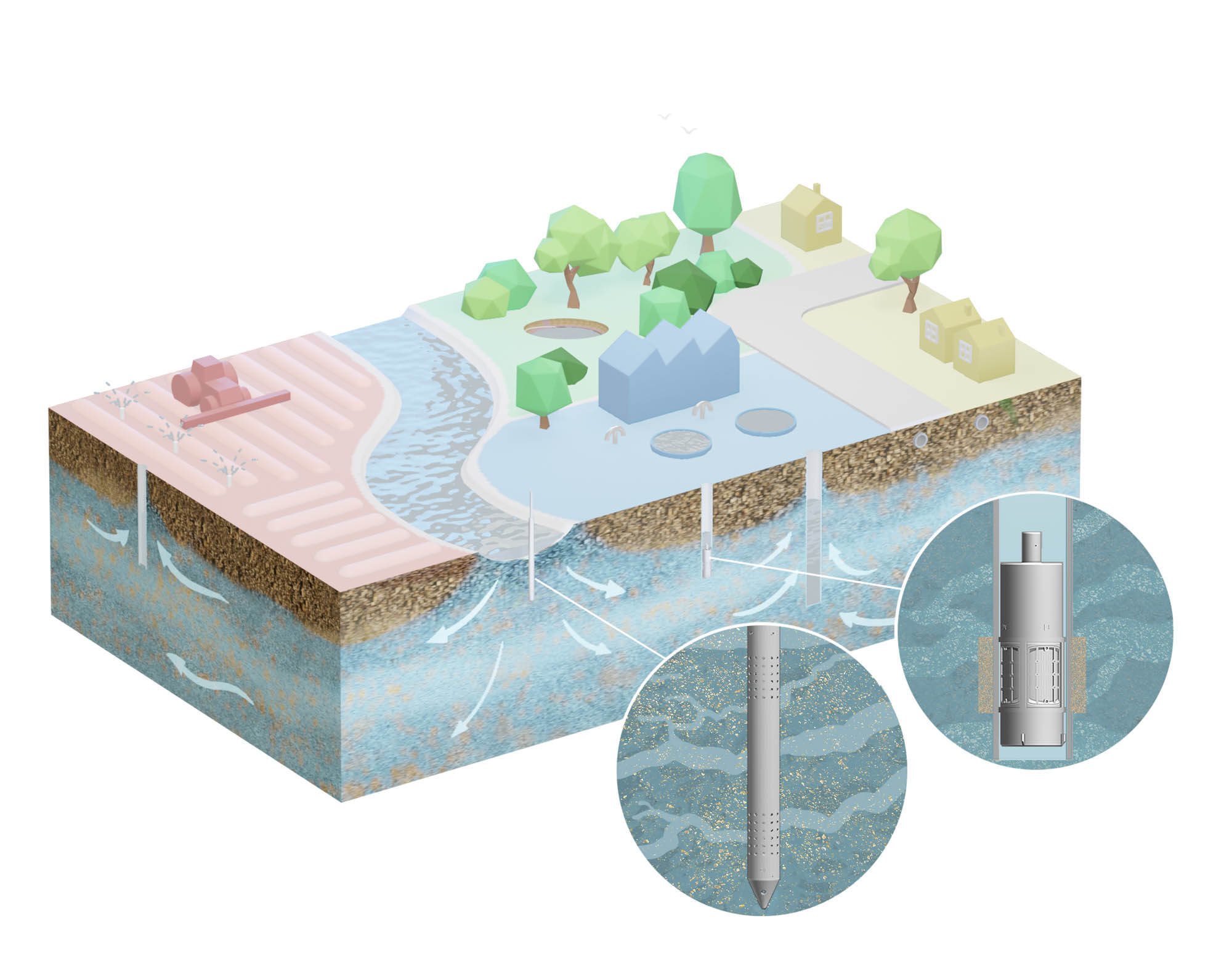iFLUX is a Belgian based scale-up that monitors and visualizes groundwater flow and quality in real-time. The company provides a software integration to allow clients to better manage groundwater and contaminations. Threats to groundwater quantity and quality become known in real time, and thus with iFLUX technology, with measurements of critical points across a network of sensors, the dynamics of the groundwater are known and optimal interventions can be designed.
For example, for a drinking water company in the Netherlands, their flux sensors track the managed infiltration of water. The sensors are applied in a coastal region, and have revealed the limitations of the current model that the client uses to manage infiltration and will be used to inform future and improved monitoring and modelling regime for groundwater management.
Interview with Carolien van Sas, Marketing Manager at iFLUX.
Easy Engineering: What are the main areas of activity of the company?
Carolien van Sas: We mostly work for industries that are most acutely impacted by groundwater stress, with particular sensitivity to quantity, quality and dynamics.
They include:
- Agriculture: Irrigation is the predominant user of groundwater in the United States, with roughly 37% of all agricultural water coming from groundwater.
- Drinking water and public utilities: Groundwater is one of the main sources for drinking water worldwide, with many under stress.
- Mining, mineral processing and mine closure: Water is central to the effective and sustainable operations of the mining industry, at every stage of processing, and sites are often located in regions where only groundwater is available. Active contamination management is critical to their bottom line, as a poor track record of groundwater management contamination, even after mine closure, can prevent mining companies from opening new sites.
- Infrastructure and construction, from smart cities to sustainable energy: Managing the infiltration and exfiltration of groundwater can be costly for new and renewed infrastructure and construction projects, particularly with the common occurrence of low-resolution models under-representing the risks.
- Land restoration: Sudden changes to the land, e.g. forest fires, can dramatically impact groundwater dynamics, and then subsequent efforts to revitalise an area, e.g. managed aquifer recharge, can lead to unexpected water losses and flooding. Reactive monitoring can result in significant cost and time losses.
- Public authorities: Last but not least, if oversight of such a critical resource as groundwater is manual, periodic, static and costly, then one can only expect slow and reactive responses.

E.E: What’s the news about new products?
C.v.S: iFLUX is now in proof of concept phase with its newest technology: real-time groundwater flux sensors. The core of the sensor technology is the integration of a fluid sensor that measures differences in groundwater flows (velocity and direction) at very low velocity. Uniquely, the iFLUX sensor elicits a signal when irregularities introduce a disturbance in the groundwater flows by new influences, i.e. potential threats. The alternative is measurement of groundwater levels, and modelling and simulating groundwater movement, while inputting the contaminant distribution established through manual periodic sampling. This is a laborious, time consuming and expensive process – a source of great value for consultants. A network of iFLUX sensors provides real-time feedback with minimal intervention, and delivers unprecedented insight into groundwater quantity, quality and dynamics, all of which are critical in times of water stress.
E.E: What are the ranges of products?
C.v.S: We offer (ground)water monitoring solutions combining technologies best suited to measure groundwater behavior. This can be passive flux sampling (mass fluxes and groundwater flux), real-time groundwater monitoring or a combination of both.
Passive flux sampling: The iFLUX Sampler measures the movement of the amount of water and mass in the saturated zone. This unique technology can simultaneously measure groundwater and mass fluxes.
Sensor networks: These networks often include our own sensor technology to measure groundwater fluxes real-time (horizontally or vertically) and can be combined with level measurements, hydrological data, nitrate sensors and so on. All available data gets combined in a dashboard to transform the measured data into actual insights about what is happening underground and what causes these behaviors.

E.E: At what stage is the market where you are currently active?
C.v.S: Historically iFLUX started with only passive flux sampling. This was mainly used in remediation projects to calibrate groundwater models, improve the remedial design, follow-up the effectiveness of remediation efforts and assess spreading risks of contaminations. Due to market demand for real-time groundwater monitoring we started developing our digital solution that is currently in Proof of Concept phase. The development of this real-time solutions broadened the scope of iFLUX.
iFLUX performed extensive lab-scale testing to validate and calibrate the sensing methodology and midway 2020 started to apply adapted prototype versions in real-time field conditions, taking care of geological conditions, remote access, fouling and cleaning procedures.
We presently have five trials in Belgium, the Netherlands, and Poland. The sectors are drinking water, land restoration, and institutional projects. Discussion is underway for demonstrations in mining, construction and smart city applications.
With the support of the EIC accelerator grant we are currently rolling out additional sensor network demonstration projects and are looking out for interesting cases with an initial focus on drinking water applications and environmental management cases.
E.E: What can you tell us about market trends?
C.v.S: Groundwater is a critical a resource for drinking water and irrigation, as well as for many industries such as manufacturing, mining, agriculture and more. Across the globe, groundwater is under pressure from over-extraction, climate change, and contamination.
Stakeholders increasingly understand the importance of groundwater, but because this resource is underground and therefore not visible, it is difficult to monitor groundwater properly. The need for groundwater monitoring is increasing due to rising water stress and consequently the adoption of sensor networks is also increasing.
Digital water management is high on the agenda. There is increasing interest but also some reluctance given the investments required and the needed expertise for setting up these networks and interpretation of the measured data. That is where companies like iFLUX come in.

E.E: What are the most innovative products marketed?
C.v.S: Not just one technology on its own, but the combination of real-time measurements that truly transform data into insights to act upon. This is what sensor networks mean to us, and how we bring an added value. (Although the groundwater flux sensor is pretty cool as a technology itself as well 😊).
E.E: What estimations do you have for 2023?
C.v.S: We only expect water stress to increase and thus an increase in water monitoring efforts. These investments will pay off by avoiding the cost of water shortages, the cost of ineffective remediations, by making water management more effective and efficient and so on.


